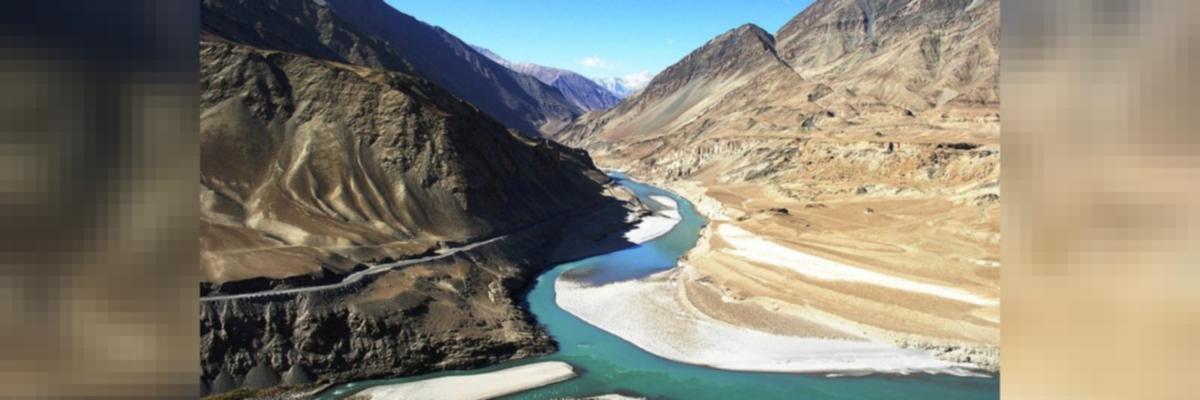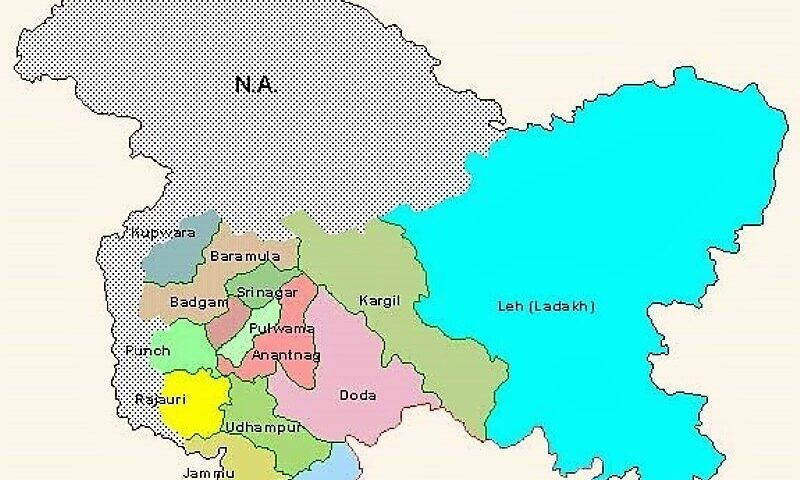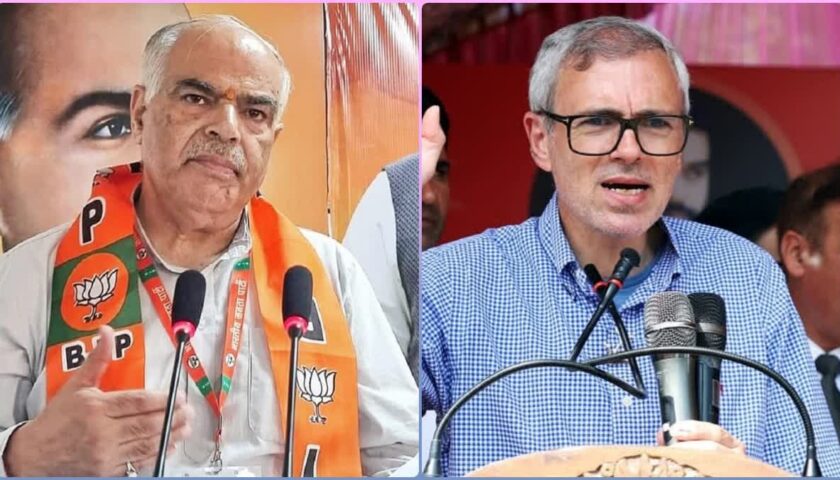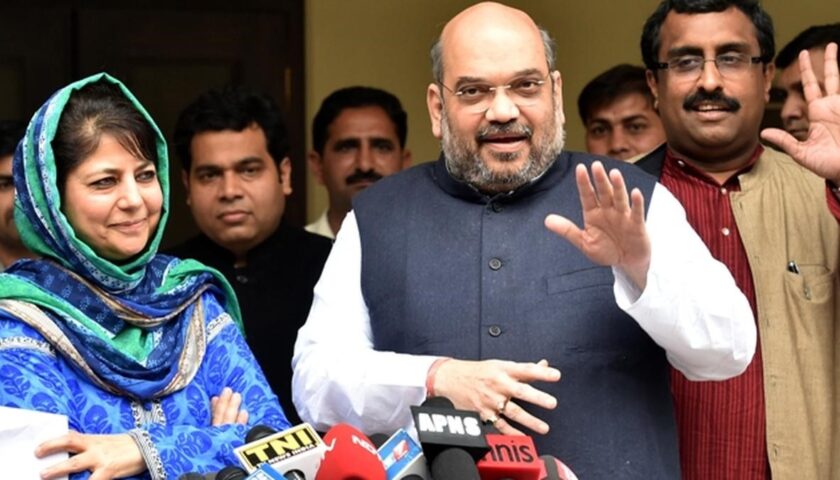Kashmir Leaders, Pakistan, and Punjab Lock Horns Over River Rerouting Plan
By: Javid Amin | Srinagar | 08 July 2023
Waters of Discord
In the scorching summer of 2025, water has become not just a resource but a battleground. The Central Government’s newly proposed plan to divert water from Jammu & Kashmir’s mighty rivers—Chenab, Jhelum, and Indus—to the parched lands of Punjab, Haryana, and Rajasthan has not just stirred political tempests but also reignited regional rivalries, legal ambiguities, and even diplomatic tensions with neighboring Pakistan.
The plan comes against the backdrop of a suspended Indus Waters Treaty (IWT)—a decades-old agreement that has governed the water-sharing rights between India and Pakistan since 1960.
Now, with emotions running high across political aisles, states, and borders, the question isn’t just about water. It’s about identity, federalism, environmental sustainability, and even war.
What Is the Indus Water Diversion Plan?
At the heart of the controversy is a 113-kilometre-long canal project that aims to reroute what the government calls “surplus water” from Jammu & Kashmir to the water-starved agricultural belts in Punjab, Haryana, and Rajasthan.
The rivers involved—Indus, Jhelum, and Chenab—are no ordinary streams. They are lifelines for Kashmir, geopolitical pressure points for India, and existential arteries for Pakistan.
According to internal sources from the Ministry of Jal Shakti, the diversion canal would:
-
Channel water via artificial tunnels and reservoirs across Union territory boundaries.
-
Connect existing irrigation infrastructure in Punjab and Haryana.
-
Bypass treaty constraints by leveraging India’s suspension of IWT.
But critics say the label of “surplus” is misleading. The rivers are already overstressed, and Kashmir itself suffers from frequent drought-like conditions, especially in Jammu’s semi-arid zones.
History & Fragility of the Indus Waters Treaty
Signed in 1960 under World Bank mediation, the Indus Waters Treaty was hailed as a rare example of Indo-Pak cooperation. It granted:
-
India control over the eastern rivers (Ravi, Beas, Sutlej).
-
Pakistan rights to the western rivers (Indus, Jhelum, Chenab).
Despite multiple wars, the treaty survived—until now.
Following the April 22 Pahalgam terror attack, allegedly orchestrated by cross-border militants, New Delhi declared a suspension of the IWT, citing national security and the “right to respond with water diplomacy.”
This policy pivot provided the legal and moral foundation for the current water diversion plan—but also raised alarms globally.
The Centre’s Rationale: Security and Scarcity
Union ministers defending the plan argue that:
-
India must no longer let its water flow unchecked into Pakistan.
-
Regions like Rajasthan and southern Haryana are suffering severe agrarian distress.
-
Internal reallocation is necessary for national development.
A senior Home Ministry official (on condition of anonymity) stated:
“Post-370 abrogation, Jammu & Kashmir is a Union Territory. Strategic resources like water can and should be nationalized for greater good.”
From Delhi’s corridors of power, the move is projected as:
-
A national imperative.
-
A counter-terrorism tool.
-
A rural revival strategy.
But regional stakeholders—and critics—aren’t buying it.
Jammu & Kashmir’s Fierce Rebuttal
No voice has been louder than that of former CM Omar Abdullah, who called the plan a “red line.” In a fiery press briefing in Srinagar, he declared:
“This is our water. We face droughts. Our farmers beg for irrigation. First, let us benefit from our own rivers.”
Backing him are:
-
National Conference (NC) leaders who call it “theft in daylight.”
-
PDP members accusing Delhi of turning Kashmir into a “colony.”
-
Local environmentalists warning of “hydrological injustice.”
Abdullah’s statement wasn’t mere rhetoric—it struck a chord with Kashmir’s historical narrative of resource exploitation, from hydroelectricity to tourism.
In Jammu, protests have already erupted in Kathua and Samba districts, where rivers are lifelines for both agriculture and livestock.
Punjab, Haryana, Rajasthan: Dry States or Political Pawns?
While Kashmir resists, Punjab, Haryana, and Rajasthan are rallying behind the Centre.
-
AAP’s Neel Garg countered Abdullah by saying:
“Punjab has always stood by the nation. We deserve water—without delay.”
-
Rajasthan’s BJP leaders argue that if the Centre can redistribute tax revenues, why not water?
But not everyone in these states agrees. Farmer unions in Punjab have issued statements cautioning against the use of Kashmir’s water if it triggers war with Pakistan.
Some civil society groups in Bikaner and Hisar warn that:
-
The plan could create inter-state water dependency.
-
It could violate existing interstate water-sharing agreements.
Thus, even within the “beneficiary” states, consensus is elusive.
Legal Maze: Union List vs State Rights
Water is a State Subject under Entry 17 of the State List, but Entry 56 of the Union List allows the Centre to regulate inter-State rivers.
This legal paradox makes the plan both:
-
Technically constitutional, and
-
Politically combustible.
Legal experts like Advocate Anuradha Bhasin note:
“This will likely end up in the Supreme Court. Federalism versus national interest—it’s the next big constitutional flashpoint.”
Already, a PIL has been filed in the Jammu & Kashmir High Court, asking for a stay on any work related to the canal project until a comprehensive environmental and human impact assessment is done.
Ecological Alarm Bells: Who Pays the Price?
Environmentalists warn that the project could:
-
Drain tributaries critical to Kashmir’s apple orchards and paddy belts.
-
Alter riverbeds, triggering landslides.
-
Impact Dal and Wular Lakes due to lower inflows.
Moreover, glacial melt rates in the Himalayas are already high due to climate change. Diverting water downstream may:
-
Disrupt river rejuvenation cycles.
-
Threaten biodiversity in Ladakh and Kishtwar regions.
Hydrologist Dr. Uzma Habib from Kashmir University observes:
“Water isn’t just a political asset. It’s an ecological vein. Cut it off at the source, and the region bleeds.”
Pakistan Reacts: Red Lines and Rhetoric
As the lower riparian state under IWT, Pakistan has declared the diversion plan as a “casus belli”—a potential cause for war.
-
The Pakistani Foreign Ministry summoned India’s High Commissioner.
-
PM Shahbaz Sharif called it “a blatant treaty violation and provocation.”
-
ISPR warned of “appropriate retaliation.”
To add fuel, The Permanent Court of Arbitration in The Hague reminded India that suspending a treaty unilaterally does not negate obligations.
This has reopened diplomatic wounds, raising fears of:
-
Another water war narrative.
-
Military miscalculation across the LoC.
-
Fresh proxy conflict in Kashmir.
China’s Strategic Posturing on Asian Water Wars
Watching silently, yet carefully, is China—an upper riparian state for Brahmaputra and Sutlej.
A veiled statement from China’s Foreign Office said:
“Unilateral water diversions may amount to a war against humanity.”
Given China’s past damming of the Brahmaputra, analysts warn that India’s diversion strategy could set a dangerous precedent.
Some fear a future where:
-
China blocks Brahmaputra to punish India during conflict.
-
Bhutan and Nepal are pulled into hydrological alliances.
Expert Opinions: Who Owns India’s Rivers?
India’s rivers are public goods. But who gets priority?
-
Dr. Pratap Bhanu Mehta: “This is not just a water dispute. It’s a debate on the meaning of justice in a federal structure.”
-
Arundhati Roy: “We can’t let rivers be militarized or politicized. They’re sacred, not strategic.”
People’s Voices: Kashmiri Farmers to Rajasthani Shepherds
-
Imtiyaz Lone, a saffron farmer in Pampore: “Our crops are dying. They want to take our water? Where’s justice?”
-
Rupa Devi, a herder from Barmer, Rajasthan: “If this brings water to our wells, we support it. But not if it starts a war.”
India’s water crisis isn’t just about canals and pipelines. It’s about the people at either end of the flow.
Political Faultlines: Nationalism vs Federalism
This crisis has exposed deep rifts:
-
BJP vs Opposition in Delhi.
-
North vs North-West states.
-
Centre vs Union Territories.
With elections in Haryana and Rajasthan looming, the plan may become a campaign weapon.
Opposition leaders accuse BJP of:
-
Undermining federalism.
-
Militarizing water.
-
Distracting from governance failures.
What Happens Next? Legal, Diplomatic, and Civil Society Battles
Expect:
-
A Supreme Court showdown.
-
More international pressure at ICJ and UN.
-
Civil society protests from Kashmir to Delhi.
India’s diplomatic corps will have to:
-
Balance water nationalism with international law.
-
Prevent an Indo-Pak or Indo-China escalation.
-
Address ecological alarms domestically.
Final Thoughts: Who Controls the Flow?
Water is no longer just a right. It’s now a currency of power, a trigger for war, and a mirror of governance.
As the Centre pushes ahead and resistance mounts, one thing is clear: Every drop now carries a geopolitical cost.




